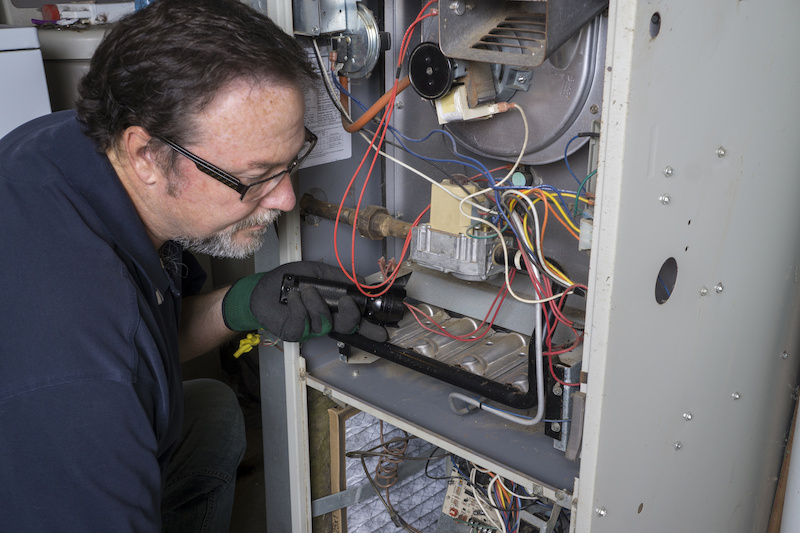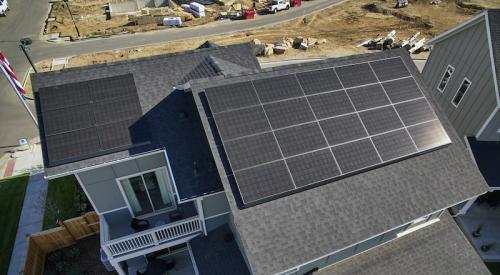Deciding to build net zero or net-zero-ready homes requires changes to every aspect of your home building business, from land deals to warranty service. This monthly series is designed to provide practical, proven strategies to ease that transition. Please check back every month for the latest installment.
RELATED ARTICLES IN THIS NET ZERO SERIES
Insights From Two Home Building Companies on Building Energy-Efficient Net Zero Homes
To find out how builders are working with their trade partners to deliver net-zero or NZE-ready homes, we asked Bill Rectanus, VP of home building operations at Thrive Home Builders, in Denver, and Jon Nieporte, spokesman for Garbett Homes, in Salt Lake City, for their perspectives and experience.
Pro Builder: How open were trade partners to transitioning to net zero-type homes?
Bill Rectanus: Some trades were reluctant. First, since they were on the hook for warranty, these new approaches were a potential financial risk for them. Second, were these new methods harder or more time-consuming and would their labor leave for easier work? Now our trades are fully engaged. Most enjoy knowing they're building better homes.
Jon Nieporte: In the beginning, they were reluctant, but once we had done the first few homes they were fine with it. After the first year and industry awards we received, they could feel a sense of pride from being involved in doing something none of their peers were doing.
PB: What was the motivation for your trade partners to get involved?
BR: They valued our relationship and they knew that if things went wrong, we wouldn’t leave them to figure things out on their own.
PB: Which trades were the most resistant?
JN: Plumbing and HVAC because they had to make the biggest changes to their products and systems. It was a learning curve for their crews. They had to send their best guys, and often owners were involved on the first several homes.
BR: At the beginning, some of the biggest challenges were HVAC, framing, insulation, and air-sealing. Their scopes needed to change the most, and so they were the most concerned about potential warranty and labor challenges.
PB: How did your trade partners get the training they needed?
JN: Most of the training came from or was facilitated by us. We have an in-house energy coordinator who's schooled in energy modeling. We built our program and released training to our trade pool and construction team in conjunction with product reps and national conferences we attend.
BR: We used groups like the Energy & Environmental Building Alliance to train our team so they could provide the support our vendors needed. Our energy rater, EnergyLogic, was instrumental in helping us monitor our projects and providing our team and vendors with the focused training we needed.
PB: Do trade partners pass along their training costs for these new skills?
BR: No. Most of the training is provided by Thrive or our building science and energy-rating partners.
JN: No. In fact, we’ve sent some of our trades to training seminars or national builder conventions on our dime to help with their training.
PB: How do labor costs compare with non-net zero homes?
JN: I'd assume we pay a little premium for labor, but our trade partners don’t gouge us because they know we don’t shop around to a large bidding pool. If there's a difference, it's because they need to spend more time training their crews that come to our sites and more time for lead guys checking on crews.
PB: What new concerns does net zero create around quality assurance?
BR: We developed our own set of construction details that shows exactly how we want our buildings constructed. We have detailed scopes of work and specifications that coincide with our Thrive details. Our quality assurance [QA] department has developed and implemented quality checklists for each phase of construction.
PB: How much does addressing those quality assurance concerns add to costs?
JN: The difference from a standard code-built home adds approximately $450 for third-party testing and at least twice that for administration and site-management time.
BR: Our QA department is an overhead expense—one we feel pays for itself. Its practices have helped us lower warranty costs, reduce rework delays, and get a reduction in our insurance rates.
PB: Who owns the responsibility for compliance?
BR: Our project manager and QA process help us ensure our partners are delivering the product we designed. The final review is always our trusted energy rater. Our energy rater is in every home at multiple times throughout the construction process.

Trade Partnerships: From the HVAC Contractor’s Perspective
The right HVAC system is a crucial element of most net zero (or net zero energy-ready) homes. Designing that system can be challenging for even the most experienced HVAC installers.
Sean Sansburn, VP, construction, at Steel T Heating & Air-Conditioning, in Englewood, Colo., has worked in the industry for more than 30 years. Steel T installs approximately 1,200 HVAC systems annually, about 20% of them for Denver-based Thrive Home Builders, a net zero home pioneer.
"Thrive understands what they're trying to achieve, and they know it's going to take certain things to make it happen,” Sansburn says. “It does put some pressure on us, and it's a challenge for me, which I enjoy.”
Initially, Steel T relied on third-party mechanical engineers for some of the technical work. That added about 12%, or roughly $800 in costs for a 2,500-square-foot home, an amount that was difficult for Steel T to absorb. Over time, the company developed the expertise in-house, and today Steel T has two full-time employees who focus on this work exclusively.
Sansburn says the builder's support was crucial in helping Steel T manage the learning curve. Sometimes the builder makes a suggestion, and Steel T researches it and reports back on whether it's a good idea or not. Other times, the research itself is a collaborative effort. "We'll tell each other: 'Let's bring the pros and cons to the table and figure out if we want to move forward with this or if we need to spend a little more on something that's a bit better for the homeowner,'" Sansburn says.
Marcie Geffner is a freelance reporter specializing in real estate and banking. She lives in Ventura, Calif.













